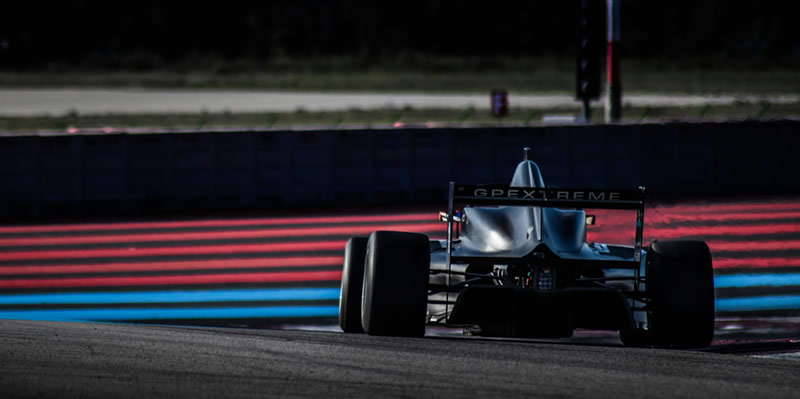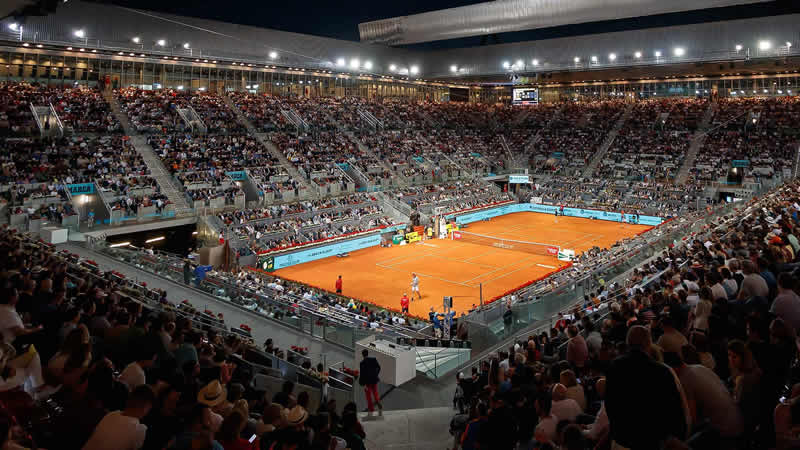Liberty Media now owns F1 and Moto GP, while it is rumored that the ATP and WTA will also move towards a merger to negotiate their assets as a unit. What will be the impact of these moves on the audiovisual industry?

A few days ago, the first coffee of the morning brought the news that Liberty Media, the company that owns Formula 1, acquired 86% of Dorna Sports to manage the TV and commercial rights of the 22 annual Moto GP competitions. Now, sports industry executives are on the lookout for another announcement that many pundits believe is close to confirmation: that the ATP and WTA are moving toward a merger to finally unite their operations in the global tennis calendar and negotiate their assets as a unit. As is almost always the case, Arab capital is behind the deal.
This week the Mutua Madrid Open tournament begins and it is expected that it will be in that arena that the conversation will end with some sort of commitment signing. The Saudi Arabian Public Investment Fund has already made an agreement with the ATP to promote some tournaments and raise the profile of the championships. The global proposal includes, according to rumors, an investment of around 1,000 million dollars to create a circuit with elite players, as well as to give a new impulse to the senior and legendary championships. All to see if Roger Federer still has the desire to offer some more of his talent.
“The WTA is actively engaging with the other governing bodies of professional tennis, as well as existing and potential commercial partners, to explore whether we can achieve greater alignment in the sport, while reducing the fragmentation that currently exists,” the WTA said when asked by Sportico and added: “These discussions have been ongoing for some time and, while they remain positive and constructive, there is currently no consensus in the sport on any outcome. In the meantime, the WTA will remain focused on delivering another exciting season and executing our growth plans, while reviewing the proposals being put forward by Saudi Arabia and the Grand Slams. There is a wave of interest in women’s sport from fans and partners around the world, and we want to ensure that women’s tennis is even bigger and better in the future.”

Global sport is in the midst of an era of acquisitions and roles. The Arab Sovereign Wealth Fund has secured LIV Golf and PGA Tour – in negotiations that are still ongoing – to merge their operations, while another wave of investment also succeeded in creating a single worldwide padel circuit, a sport that nearly 30 years after its first popular push, has another chance for growth.
The Public Investment Fund, with assets under management valued at $925 billion, injected billions of dollars into the sports sector. The fund’s most significant investment to date has been in LIV Golf. In addition, PIF has invested $100 million in the Professional Fighters League, acquired Premier League soccer club Newcastle, and stepped up player recruitment in Saudi Arabia’s national soccer league. In line with Saudi Arabia’s Vision 2030 initiative, the fund has also promoted the organization of events in sports such as Formula 1, boxing and WWE in that country.
The deal between Liberty and Dorna Sports, with no Arab capital in sight, is another potent example of this trend, with one organization investing in another and with the sign of its economic health in the deal itself: Liberty paid part of the €4.2 billion acquisition with Formula 1 shares now held by Dorna executives, who retained nearly 14 percent ownership.
Still with the announcement hot; both Formula 1 and Moto GP sought to clarify a central issue for their fans, commercial partners and media: each vertical will continue to be run independently. We won’t see weekends with cars and bikes on the circuits and tracks of the planet. At least not for now.
Tennis is moving to another plane. Joint competitions between men and women are frequent in Grand Slam tournaments, Masters 1000 and other dates on the calendar. But the collective bet is to avoid any fragmentation of the tennis offer that divides audiences, sponsors and agreements for broadcasting rights and content. The two tours are discussing merging their commercial operations under a single umbrella called Tennis Ventures.

The ATP has been analyzing the market and looking for solutions for years. Andrea Gaudenzi, chairman of men’s tennis, began his administration in 2020 with the idea of bringing all the sport’s stakeholders online (there are seven in total, a multitude for decision making) and he did it under this diagnosis
Tennis is the fourth sport with the largest number of fans in the world: it exceeds 1 billion spectators and ranks behind soccer, basketball and cricket.
It earns 700 million dollars globally from broadcasting rights.
The global “pie” for sports broadcasting rights revenue is almost $50 billion, so tennis has a 1.3 percent share of that revenue.
Tennis receives on average $0.50 cents per viewer, while golf earns $3, six times more.
According to Gaudenzi, tennis in the 1990s -when he played- #offered a bad product: the only thing possible was linear TV and the public did not know when a match started, when it ended and who was going to play. Technologies now make it possible to have multiple matches and let everyone choose what to watch.”
In its strategy, the ATP prepared two vital changes to how tennis has been running its business until now: centralizing the sale of sports rights for all its tournaments with ATP Media and establishing a 50/50 revenue sharing formula between players and tournament promoters, with a planned increase of 2.5 percent per year.
The ATP found in its research that 55 percent of tennis audiovisual content consumption is live and 45 percent is produced on demand. And that the average TV viewer is around 45 years old. That’s why the digital strategy of men’s tennis has taken at least five years of digital transformation to put the fan, not the tennis player, at center stage.
If they succeed, it will be in tandem with WTA women’s tennis. And if the news is as they say, it may be with the backing of Arab capital.